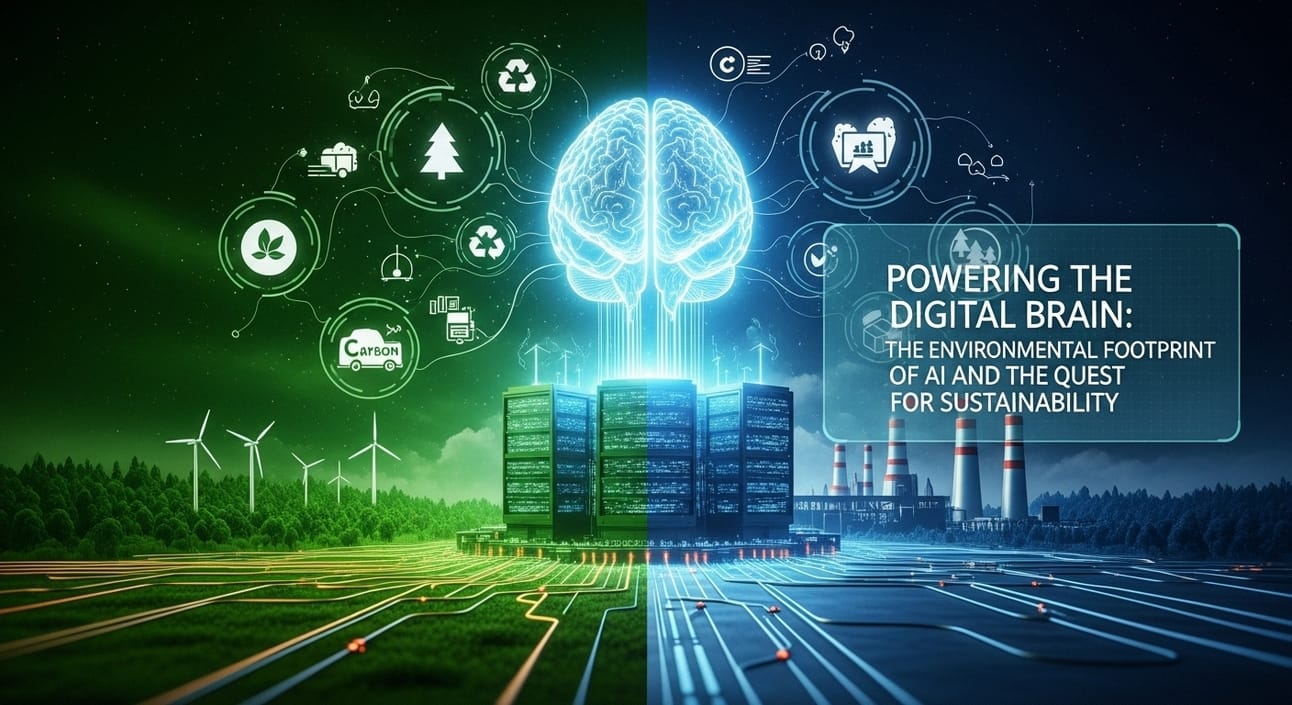- Digital Brain
- Posts
- Powering the Digital Brain: The Environmental Footprint of AI and the Quest for Sustainability
Powering the Digital Brain: The Environmental Footprint of AI and the Quest for Sustainability

Hello, Digital Brain reader!
We've marveled at AI's incredible capabilities, from its creative prowess to its role in cybersecurity and its integration into our daily lives. Yet, behind every powerful algorithm, every complex model, and every lightning-fast computation lies a hidden cost: energy. As the "Digital Brain" grows in complexity and scale, its environmental footprint becomes an increasingly critical concern. Today, we'll explore the paradox of AI's power and the urgent quest for more sustainable artificial intelligence.
The Hidden Cost of Intelligence: Energy and Resources
Training and running advanced AI models, especially large language models (LLMs) and generative AI, require immense computational power. This power translates directly into significant energy consumption and resource demands:
Energy-Intensive Training: Training a single large AI model can consume as much energy as several homes use in a year, or even more. This is due to the thousands of hours of processing on specialized hardware (GPUs) in massive data centers. The carbon emissions associated with this energy use are substantial, particularly if the energy comes from fossil fuels.
Data Center Footprint: The data centers that house these powerful servers are energy hogs. Beyond the computing itself, they require vast amounts of energy for cooling to prevent overheating. Many also consume significant amounts of water for their cooling systems.
Hardware Production: The manufacturing of the specialized chips and hardware needed for AI (GPUs, TPUs) is also resource-intensive, requiring rare earth minerals and contributing to electronic waste.
Continuous Inference: While training is the most energy-intensive phase, the ongoing use (inference) of these models by millions of users worldwide also adds up, contributing to a continuous energy demand.
The AI Paradox: A Tool for Both Problem and Solution
Here lies the paradox: while AI contributes to environmental challenges, it also holds immense potential to be a powerful tool in solving them:
Optimizing Energy Grids: AI can predict energy demand, optimize renewable energy integration, and manage smart grids more efficiently, reducing waste.
Climate Modeling and Prediction: AI models are crucial for more accurate climate predictions, understanding complex environmental systems, and forecasting extreme weather events.
Sustainable Agriculture: AI can optimize irrigation, pest control, and crop yields, reducing water and pesticide use.
Resource Management: AI can improve supply chain efficiency, reduce waste in manufacturing, and optimize logistics, leading to lower carbon emissions.
Biodiversity Conservation: AI is used for tracking wildlife, monitoring deforestation, and combating illegal poaching.
The Quest for Green AI: Towards a Sustainable Digital Brain
Recognizing the environmental impact, researchers and industry leaders are actively pursuing "Green AI" initiatives:
Algorithmic Efficiency: Developing more efficient AI algorithms that require less computational power and data to achieve similar or better results. This includes techniques like model compression and sparse models.
Hardware Optimization: Designing more energy-efficient AI chips and optimizing data center infrastructure for lower energy and water consumption.
Renewable Energy for Data Centers: Shifting data centers to run on 100% renewable energy sources (solar, wind, hydro). Many tech giants are already making significant strides in this area.
Transparency and Reporting: Encouraging companies to publicly report the energy consumption and carbon footprint of their AI models, fostering accountability and driving innovation.
Lifecycle Assessment: Considering the environmental impact across the entire lifecycle of AI systems, from hardware manufacturing to disposal.
Your Role in a Sustainable AI Future
As users and advocates of the "Digital Brain," our awareness and choices matter:
Support Green Initiatives: Favor companies and services that prioritize sustainable AI practices.
Demand Transparency: Encourage greater transparency from AI developers regarding their environmental impact.
Educate Yourself: Understand the energy implications of the digital tools you use.
Advocate for Policy: Support policies that promote sustainable technology development and renewable energy infrastructure.
The future of AI is not just about intelligence; it's about responsible intelligence. By addressing the environmental footprint of the "Digital Brain," we can ensure that its incredible power is harnessed for a future that is not only smarter but also healthier and more sustainable for our planet.
Stay conscious, stay green, and see you in the next edition!
Sincerely,
The Digital Brain Team